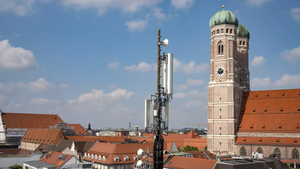IDC Sees Modest FTTP Growth
Big forecasts for fiber to the premises are likely overblown, according to figures from IDC
November 18, 2003

What's the potential for a boom in FTTP (fiber to the premises)? IDC's got some numbers. The research firm points out that the number of users worldwide who access broadband services via fiber connections direct to their homes or businesses is quite small and that by 2007 the number will have doubled but will still be modest.
The firm reports that in 2002, 2.9 percent of the 58 million-odd broadband connections worldwide were made via fiber, using either passive optical networks (PONs) or point-to-point links like Ethernet. In contrast, more than 97 percent of folk used cable modems, DSL, or fixed wireless to get their data.
By 2007, IDC forecasts, broadband connections will more than double, and so will fiber links: of 209 million connections, 9.9 percent, or about 20 million, will be fiber.
While 20 million is a large number, it needs to be put into context. Today, there are more than 50 million DSL users worldwide (see DSL Heads for 60M Users). So by 2007, the number of fiber subscribers will still be less than half of DSL volume in 2003.
Table 1: Fiber as Percentage of Worldwide Broadband Connections, 2002 to 2007
2002 | 2003 | 2004 | 2005 | 2006 | 2007 | |
Fiber share % | 2.90% | 3.30% | 4.10% | 5.60% | 7.60% | 9.90% |
Total broadband connections | 58M | 84M | 114M | 147M | 179M | 208M |
Source: IDC |
These figures don't assume any input from the U.S. RBOCs, according to Sterling Perrin, senior research analyst at IDC. Their plans for fiber installation are the subject of ongoing speculation. Light Reading sources, for instance, say the RFP issued this summer by BellSouth Corp. (NYSE: BLS), SBC Communications Inc. (NYSE: SBC), and Verizon Communications Inc. (NYSE: VZ) could result in fewer than 60,000 fiber connections or more than 600,000 by 2004, depending on how serious the RBOCs prove to be about fiber (see FTTP Booty Tough to Peg).
Perrin is one of the skeptics. Without a "killer application," he says, RBOCs aren't likely to be aggressive in fiber rollouts. While consumer interest in video is increasing, new compression techniques are improving the outlook for DSL. Besides, RBOCs' DSL deployments are proving successful, providing a disincentive to rip out copper that's paying the bills and replace it with fiber that may or may not.
— Mary Jander, Senior Editor, Light Reading
You May Also Like










